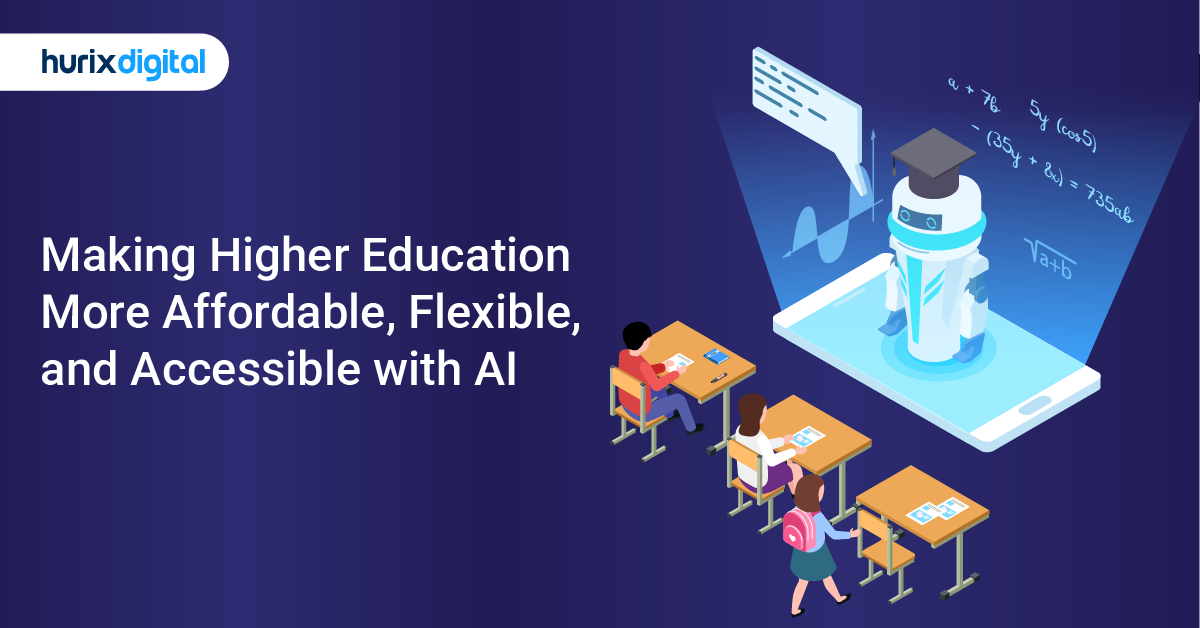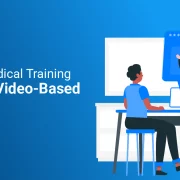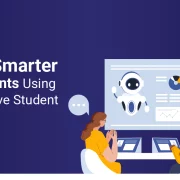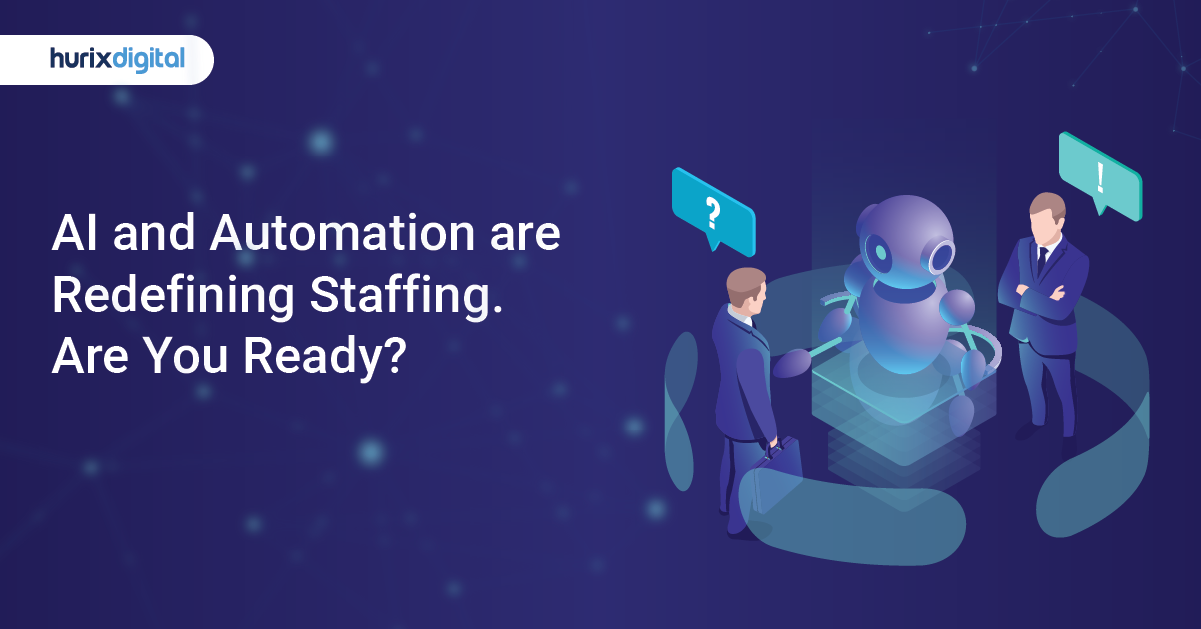
AI and Automation are Redefining Staffing. Are You Ready?
Summary
AI in HR transforms the staffing landscape by smoothing the hiring process, enhancing talent matching, and optimizing workforce management. This blog will explore how businesses can use AI-powered staffing solutions to keep up with the fast-changing job market.
The HR department has been evolving for years. From a mere administrative role to taking on a consultative and advisory presence, HR has been quite the change-maker. But now, as technology develops, we find ourselves asking what the future of AI in HR looks like.
A Gartner survey indicates that the employee turnover rate will rise to over 24% in the years to come, presenting a challenge that will have a long-term impact on businesses.
Attrition takes a toll on a business’s finances, culture, productivity levels, and business outcomes. However, companies are struggling to address these challenges due to their inability to keep pace with evolving employee expectations.
This is where cutting-edge technologies such as artificial intelligence (AI) when integrated with automation, can help businesses become strategic in their approach to addressing Human Resources (HR) and staffing issues.
AI in HR services is here, and it’s all about recruitment and selection.
AI solutions in the recruitment industry are capable of helping companies find the best talent that fits their requirements, helping them achieve their business goals.
Some AI talent acquisition systems use machine learning capabilities, which have improved over time and are better equipped to deal with job-seekers’ expectations than ever before.
Table of Contents:
- Key Challenges in HR and Staffing Solutions
- How Does Artificial Intelligence Recruiting Software Work?
- How Can AI Staffing Solutions Help in the Recruitment and Selection of Candidates?
- Types of AI Staffing Tools
- AI for Onboarding and Training
- How Does Staffing Process Automation Help Inclusion and Diversity?
- 7 Ways AI is Transforming Staffing Solutions
- Adapting to the Changing Workforce Landscape
- Embracing the Human-AI Collaboration
- Ensuring Ethical and Responsible AI Implementation
- The Future of Technology Staffing Solutions
- Key Takeaways
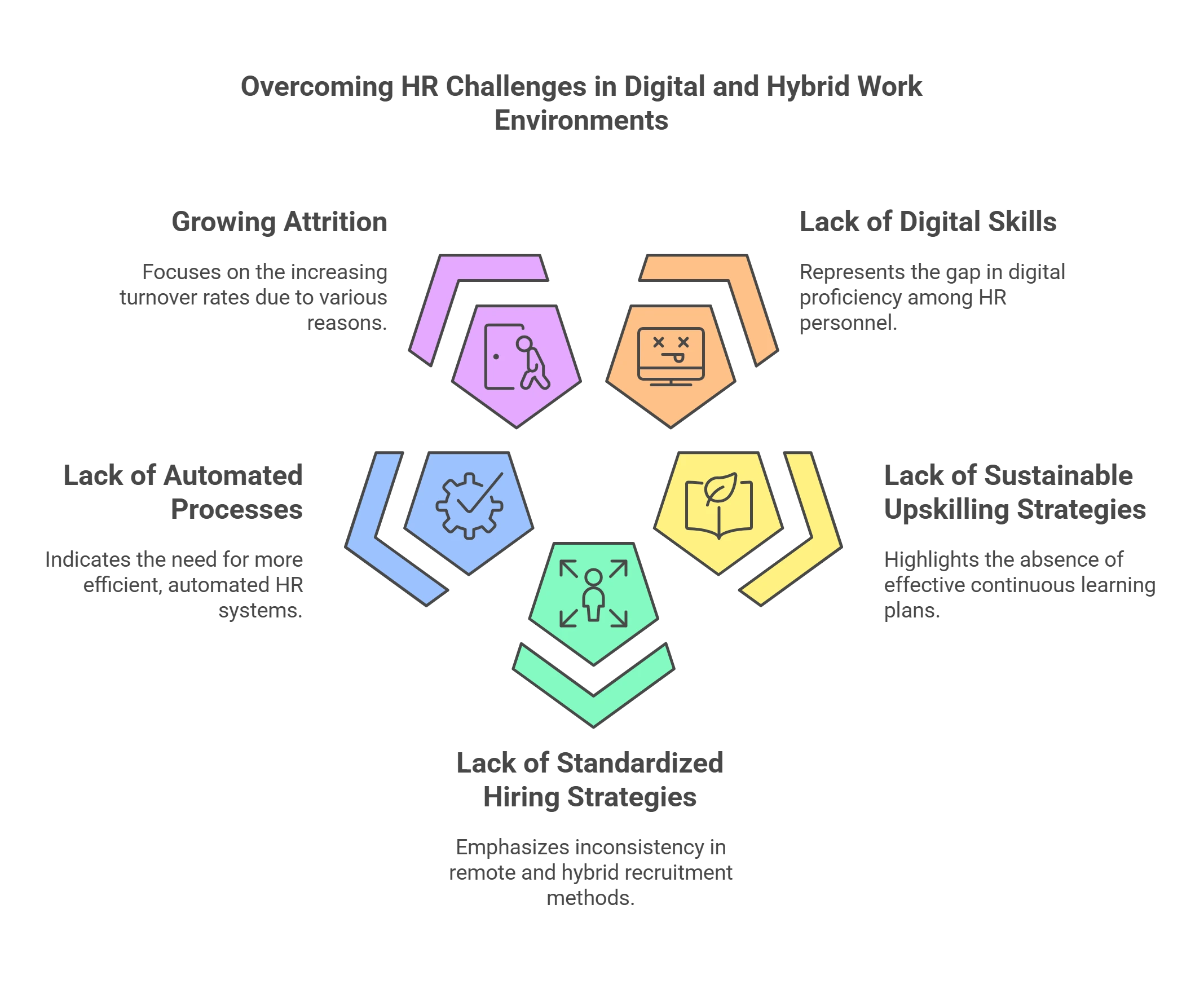
Key Challenges in HR and Staffing Solutions
Staffing solutions look very different from even five years back. Several factors have led to this status quo and, in turn, unique challenges that businesses must address. Here is a snapshot:
1. Lack of Digital Skills
Digital transformation across industries demands workers with relevant digital skills besides domain knowledge. However, upskilling has not kept pace with this shift.
Hence, staffing is more challenging. As market demands change, businesses must be able to predict the corresponding skill sets and hiring needs to meet those demands. Existing strategies may not suffice.
2. Lack of Sustainable Upskilling Strategies
Existing employees need to be upskilled to keep pace with new job roles and upcoming skills.
Without a proper upskilling strategy, workforces are at risk of becoming redundant, leading to low productivity and an inability to meet market challenges.
3. Lack of Standardized Remote/Hybrid Hiring Strategies
The rise of remote and hybrid workforces requires investment in building specific recruitment strategies for these hiring situations, which present unique challenges.
4. Lack of Automated Processes
A large amount of HR and staffing work is still being done manually, making it challenging for teams to reduce errors and duplication. They also struggle to detect cases of potential fraud/ fake profiles.
5. Growing Attrition Due to Multiple Factors
The attrition rate is growing due to several reasons – poor matching of skills to job roles, lack of growth opportunities, and culture mismatch for fresh recruits.
Companies engaged in staffing services need a healthy mix of AI and human strategy to optimize their operations and address various issues.
How Does Artificial Intelligence Recruiting Software Work?
The first thing you need to know about AI recruiting software uses an algorithm based on logic and data points to make decisions about hiring decisions for companies as virtual assistants.
Human recruiters can leverage artificial intelligence tools by feeding them information about candidates, including resumes, cover letters, work samples, and social media profiles. These tools then use that data to predict which candidate would be best suited for a specific role within a company or organization based on their previous experience, education level, skill set, and more.
By selecting the most qualified candidates based on pre-set criteria set by human recruiters or managers, AI recruiting software saves both time and money in employee engagement and retention. AI staffing solutions can automate part or all of the hiring process, allowing organizations to scale operations while maintaining quality control.
How Can AI Staffing Solutions Help in the Recruitment and Selection of Candidates?
Recruitment is the backbone of any organization, and companies must find the right people for the job.
While there are many different aspects of recruiting, one of the most important parts is finding candidates that suit your business needs and culture. Unfortunately, this can be a very time-consuming process.
However, AI in HR has been making huge strides in recent years, and now there are many automated solutions available to help businesses find the right candidates for their jobs. AI Staffing solutions use machine learning algorithms to analyze data from various sources — including social media — and make predictions about future events such as employee turnover or performance management reviews.
They can also automate certain aspects of the hiring process, such as scheduling interviews or emailing candidates who have applied for positions. About 76% of HR leaders believe they will lag in organizational success if they don’t adopt AI in HR solutions in 12-24 months.
Types of AI Staffing Tools
Various types of AI staffing tools are available. Organizations can choose a combination of tools that best meet their requirements.
1. Intelligent Screening Tools
This category includes software solutions designed to automate the resume screening process completely. These AI-powered tools use existing company databases to learn about different types of candidates and their behavior patterns.
These tools also consider details like current employees’ skill sets, experience, and other attributes that make them successful at work. AI tools then utilize these insights to screen resumes and find applicants likely to be a good fit for the company. AI tools also help minimize biases based on gender, race, and religion that human HR managers may be prone to. Moreover, AI tools with specialized features can make it easier for candidates with disabilities to appear for interviews.
2. Configurable Chatbot
Chatbots can be configured to ensure real-time interactions with candidates applying for a job and can be personalized according to the organization’s needs. When used correctly, chatbots can lead to superior candidate experiences by giving them prompt responses after receiving their applications.
3. Digitized Interviews
One of the most useful features of AI in HR is digitized interviews. AI-based software can now enable video interviews with candidates and provide reliable proctored assessments to ensure fair hiring practices. With 52% of talent acquisition professionals finding screening quality candidates the most challenging part of recruitment, AI is certainly the future of staffing solutions.
Skill assessment tools with automated performance analysis can help your company run bias-free and reliable analyses to shortlist the most talented job candidates. Interview software can analyze candidates’ speech patterns, usage of words, and facial expressions to determine their suitability for the organization and work culture.
AI for Onboarding and Training
Employee onboarding is a significant part of the hiring process, and there are AI-powered systems that can ensure a smooth and successful transition for new hires. AI onboarding software can streamline onboarding by automating repetitive tasks like filing paperwork and scheduling training sessions for new employees.
The AI-based system allows for more personalized onboarding experiences for each employee by considering their unique skills and job requirements. AI tools can also make training more effective with customized training modules tailored to employees’ training needs and abilities.
How Does Staffing Process Automation Help Inclusion and Diversity?
Companies in the contemporary era prioritize equity, diversity, and inclusion while building teams. There is a strong need to build bias-free workplaces, and AI staffing solutions are great for achieving this objective. AI staffing solutions eliminate innate human biases and help create a transparent and fair recruitment procedure that focuses purely on candidates’ skills, aptitudes, and merits.
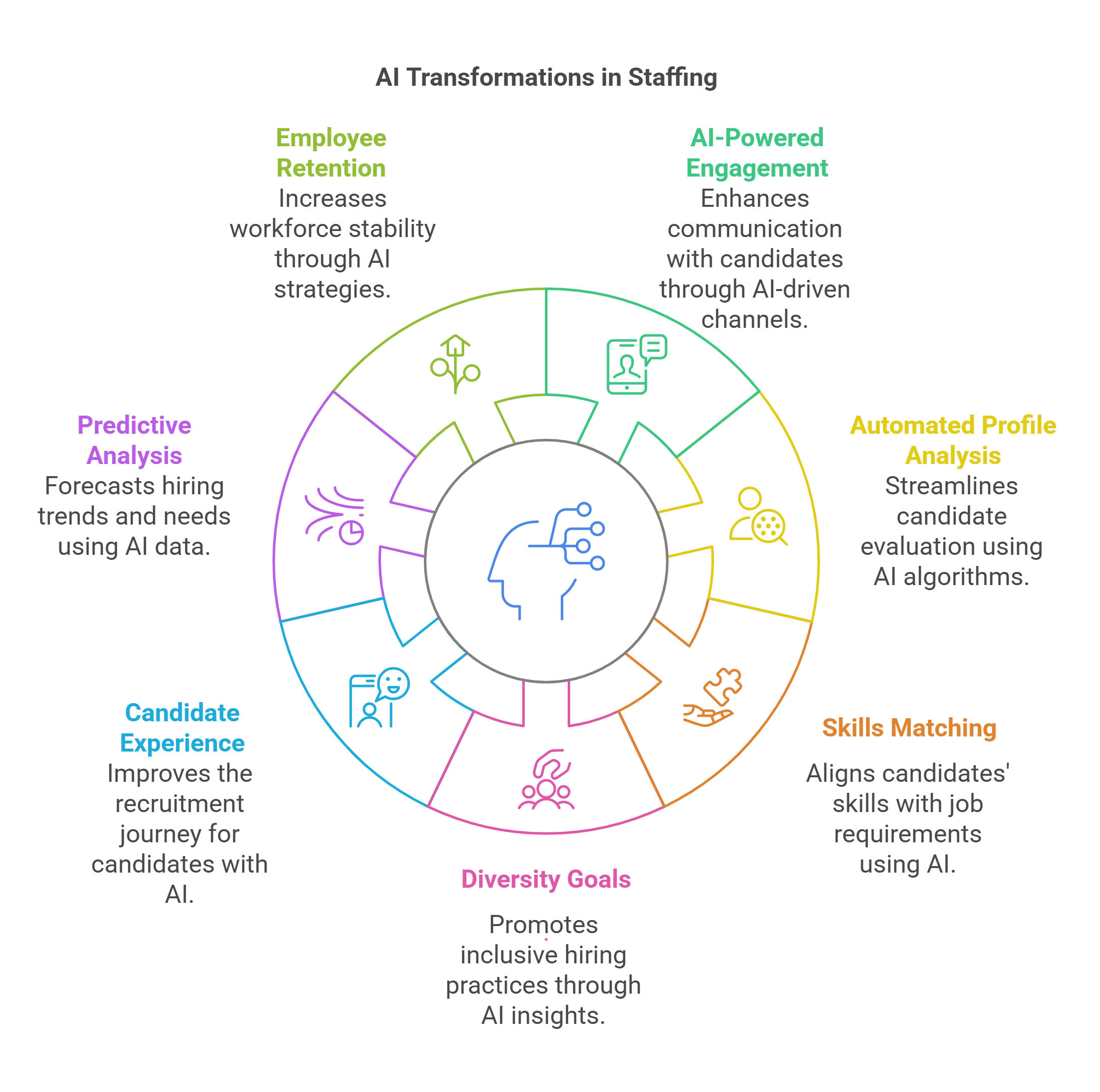
7 Ways AI is Transforming Staffing Solutions
Here is a snapshot of how AI-enabled complete staffing solutions can benefit the HR function of a business or a staffing solutions company by implementing the following steps.
1. AI-Powered Engagement Across Channels
Today, a staffing company can use AI to help automate communication across all channels, especially as it scales across geographies and functions. For instance, potential employees may seek responses to common questions.
Rather than rely on human intervention, which is neither standardized nor accessible 24/7, the entire engagement process can be automated using pre-programmed AI-driven chatbots.
This mechanism supports the continuous gathering and processing of engagement data, which can help enhance understanding of a job aspirant’s priorities, aspirations, and needs.
2. Automated Profile Analysis of Potential Recruits
An AI-driven staffing solutions software can analyze massive amounts of data sources from multiple channels, such as social media, job boards, and submitted resumes, within minutes.
Candidates can be segregated by specific categories such as skill sets, work experience, education, and projects. It automatically scans for specific keywords and can help shortlist candidates from a large number of profiles.
Automating the profile/resume scanning process reduces the load on HR teams and frees up bandwidth for more strategic decision-making.
3. Matching Candidates to Skills Needed
Today, businesses are placing more importance on the relevance of skills as opposed to work experience and education.
AI and machine learning-powered staffing platforms can program their algorithms to match candidates with specific skills with relevant job roles.
Such systems can identify specific patterns and enhance the overall quality of matches more quickly than manual matching.
4. Bringing More Diversity Goals to Hiring
With the growth of remote opportunities, there is more potential to fulfill diversity goals. For instance, candidates from various locations, genders, and communities can be encouraged to apply for job roles.
AI-powered search algorithms are growing in their popularity. They weed out inherent biases in job descriptions, cull candidate data from multiple sources (social media to chatbot conversations), and predict which candidates are suitable for job roles with speed.
They pay more attention to aspects such as skills rather than mere job qualifications. This process can be replicated for full-time roles at all hierarchy levels.
5. Superior Candidate Experience
Companies offering candidates a seamless hiring experience are more likely to create a positive impression and cement their reputation as an employer of repute.
Today, companies can leverage the benefits of AI-powered interview scheduling to raise the quality and proactiveness of communication. The process becomes fully automated and seamless for employees, employers, and interviewers.
6. The Growing Role of Predictive Analysis
HR and staffing teams process massive amounts of candidate-related data every day. This can include resumes, emails, interviews, profiles, and other types of conversations.
Any superior staffing solution platform, some equipped with an AI-powered data analytics engine, which analyzes historical data and recruits behavior.
Hence, companies can predict trends ahead of the curve and change strategies accordingly.
7. Boosting Employee Retention
It’s a lot less expensive to train an existing employee than to hire a new one. Hence, staffing solutions services must also focus on employee retention.
AI-powered tech solutions are key in helping businesses understand the state of skills, employee motivation, productivity, and attrition.
Based on this real-time information, businesses can invest in the right resources to upskill staff, build growth pipelines for employees, raise productivity, and hire for new roles.
Adapting to the Changing Workforce Landscape
The workforce landscape constantly evolves, and technology staffing solutions are essential for staying ahead of the curve. As the gig economy and remote work become more prevalent, staffing companies need to adapt their strategies to attract and retain top talent.
Technology can facilitate remote hiring and onboarding processes, enabling companies to access a wider pool of candidates regardless of geographical constraints. It also allows for more flexible work arrangements, catering to employers’ and employees’ needs and preferences.
Embracing the Human-AI Collaboration
While complete staffing solutions with technology offer numerous benefits, it is important to emphasize that AI is not meant to replace human beings but to augment their capabilities. The collaboration between humans and AI can result in better outcomes and more efficient processes.
AI can handle repetitive tasks, data analysis, and administrative duties, while humans can focus on tasks that require creativity, critical thinking, and emotional intelligence. By leveraging the strengths of both humans and AI, staffing companies can create a harmonious and productive work environment.
Ensuring Ethical and Responsible AI Implementation
Ensuring ethical and responsible AI implementation in the staffing industry is crucial as technology advances. Bias in AI algorithms and decision-making processes can have significant consequences, perpetuating inequalities and discrimination.
Staffing companies must prioritize fairness, transparency, and accountability when developing and deploying AI-powered systems. Regular audits, diversity training, and ongoing evaluation of AI systems are essential to ensure technology staffing solutions are used responsibly and ethically.
The Future of Technology Staffing Solutions
The future of technology staffing solutions is promising, with ongoing advancements in AI, automation, and data analytics. As technology evolves, staffing companies must stay agile and adapt to the changing landscape.
Investing in continuous learning and development is crucial to keep up with emerging technologies and industry trends. By embracing technology and leveraging its power, staffing companies can stay competitive, deliver comprehensive staffing solutions, and drive organizational success in the digital age.
Key Takeaways
Human resource departments are responsible for recruiting new talent and managing the talent pool within a company. AI’s inevitable automation of numerous HR tasks, such as shortlisting applicants and scheduling interviews, will place human resources in a much better position to focus their energies on the original purpose of their department: the people.
By letting AI in HR handle the more menial tasks, the department will be able to develop better hiring strategies and implement them more widely.
The future of HR is rapidly changing, and a barrage of new technologies and digital platforms will shape it. We’ve only begun to scratch the surface with AI, and it’s exciting to think of what future applications in recruitment could be like. If you’re looking to stay ahead of your competitors and grow your business, it’s time to consider recruiting automation solutions from Hurix Digital.
Connect with us to learn more about the impact of AI staffing solutions on recruitment.

Currently serving as the Vice President of Technology Delivery Operations at HurixDigital, a prominent global provider of digital content and technology solutions for publishers, corporations, and educational institutions. With over 16 years of experience spanning EdTech and various domains, I hold certification as a SCRUM Product Owner (CSPO). My expertise includes operations, finance, and adept people management skills.
